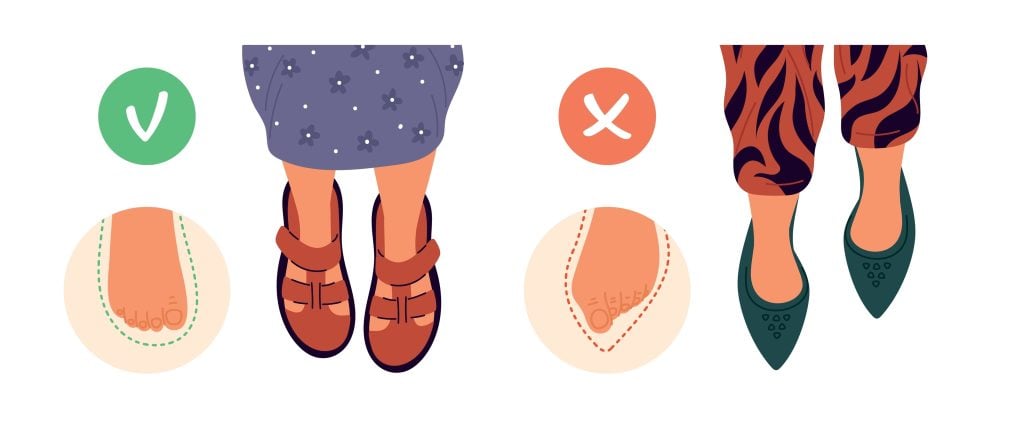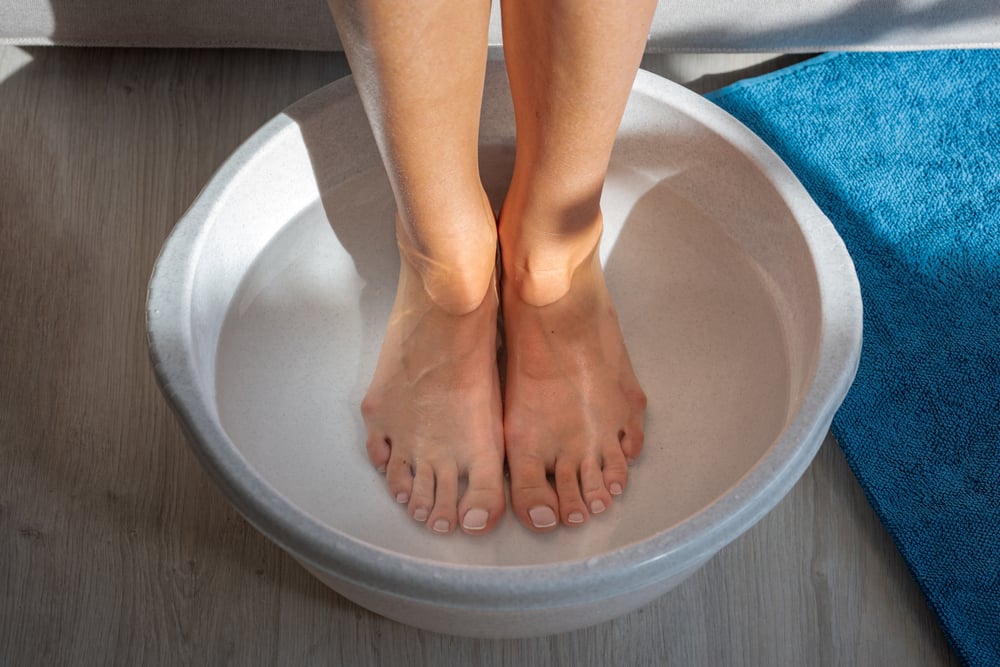Foot Corns & Calluses: Symptoms, Causes & Treatments
Corns and calluses, often misunderstood as minor foot issues, can greatly impact daily life. The thickened, rough patches of skin, often accompanied by hardened bumps and tenderness, are more than just surface-level concerns. These conditions are caused by a variety of factors, including ill-fitting footwear and repetitive stress.
Understanding the intricate causes and symptoms is essential for effective treatment and prevention. What are the most recommended treatments by podiatrists, and how can one prevent these painful nuisances from recurring? The answers may surprise you and underscore the significance of proactive foot care.
Symptoms of Corns and Calluses
Corns and calluses are typically characterised by thickened, rough skin, hardened bumps, tenderness, and a flaky or dry appearance. These dermatological manifestations are common indicators of underlying pressure or friction:
Foot corns, in particular, is characterised by a hard centre surrounded by inflamed skin, which frequently appears on the tops and sides of toes.
The formation of corns on feet can lead to significant discomfort, especially when subjected to continuous pressure from footwear.

Calluses, or callus disease, mainly develop on the soles of the feet and palms of the hands.
A foot callus appears to be a larger, more diffuse area of hardened skin, often without a distinct core, and may be less sensitive to touch than corns.
Despite their benign nature, these conditions can cause considerable inconvenience, necessitating effective corns on feet treatment.

Treatment options typically involve a combination of mechanical and topical interventions. Soaking the affected area, using a pumice stone to gently file away excess skin, and applying moisturising lotions are all common practices.
Persistent or severe cases warrant professional medical evaluation, particularly for individuals with underlying health conditions such as diabetes or poor circulation, ensuring thorough care and freedom from recurrent discomfort.
Causes of Corns and Calluses
Understanding the underlying causes of corns and calluses is imperative to effectively manage and prevent these common skin conditions. These thickened skin areas primarily arise from the body’s natural response to excessive friction and pressure. Commonly found on the toes, sides, and balls of the feet, they manifest in varying textures, ranging from rigid and dry to soft and mushy.
Several factors contribute to the development of corns and calluses:
- Ill-fitting footwear: Shoes that are too tight, too loose, or have high heels can create concentrated pressure points, leading to the formation of corns and calluses.
- Repetitive activities: Things that involve repeated pressure or friction on the feet, such as running or walking long distances, can result in callus formation.
- Foot anatomy: Abnormalities, such as hammertoes or bunions, can cause specific areas of the foot to bear more pressure, fostering corn development.
- Neglecting foot care: Failure to properly trim toenails or maintain foot hygiene can exacerbate pressure points, contributing to these skin conditions.
To get rid of corns on feet or learn how to get rid of calluses on feet, it is essential to identify and mitigate the root causes. Addressing these factors not only alleviates existing issues but also prevents recurrence, ensuring optimal foot health and comfort.
Effective Corns & Calluses Podiatrist Treatments
Podiatrists employ a range of evidence-based treatments to efficiently manage and alleviate the discomfort associated with corns and calluses:
-
Debridement
One primary approach is the debridement of thickened skin, which reduces pain and prevents further issues. This procedure involves carefully trimming or paring down the hardened areas using specialised instruments to bring immediate relief.
-
Orthotics
We frequently recommend custom insoles or orthotics to redistribute pressure across the feet, thereby minimising the stress on specific areas prone to developing corns and calluses. We tailor these devices to the individual's foot structure and gait, ensuring optimal comfort and support.
-
In-Clinic Procedure
For more persistent cases, podiatrists may perform in-clinic procedures to remove the painful core of corns. This targeted intervention addresses the root cause, providing significant and lasting relief.
-
Dermal Foot Balms
Additionally, podiatrists often prescribe dermal foot balms containing urea or salicylic acid to maintain skin hydration and promote softness, preventing recurrence.
-
Pumice Stone
Routine use of pumice stones during home care can also help to maintain smooth skin.
Seeking professional diagnosis and treatment is crucial for effectively managing corns and calluses, ensuring thorough care, and preventing potential issues.
Prevention Strategies
Preventing corns and calluses requires a proactive approach to foot care, emphasising the importance of well-fitted shoes, regular toenail trimming, and diligent foot hygiene.
Proper footwear is critical for reducing the friction and pressure that lead to these conditions. Selecting shoes that offer ample toe room and cushioning can significantly reduce the likelihood of developing corns and calluses.
Here are key prevention strategies:
Choose Well-Fitted Shoes
Make sure shoes have enough room for toes to move freely, and avoid tight or high-heeled footwear.
Shopping for shoes in the afternoon, when feet are slightly swollen, can help achieve a better fit.

Regular Toenail Trimming
Trim toenails straight across and keep them at a moderate length to prevent pressure on the toes, which can contribute to corns and calluses.

Maintain Foot Hygiene
Wash and thoroughly dry feet daily. To keep the skin supple and reduce dryness that can worsen callus formation, use a moisturising lotion.

Address Foot Issues Promptly
Attend to any foot discomfort or abnormalities immediately to prevent the progression of corns and calluses.
This includes using protective pads or insoles to alleviate pressure points.

Adopting these measures can effectively manage and prevent the formation of corns and calluses, ensuring excellent foot health.
When to Seek Professional Advice
For corns and calluses that become excessively painful, inflamed, or show signs of infection, seeking professional medical advice is vital. Individuals experiencing these symptoms should not delay consulting a podiatrist, as early intervention can prevent complications such as infections or ulcerations.

Those with diabetes or poor blood flow are particularly vulnerable and should promptly seek medical attention for any foot issues, including corns and calluses. Diabetic patients are at a heightened risk for serious complications, including foot ulcers and potential limb-threatening infections, due to impaired healing and reduced sensation. Thus, prompt and professional management is crucial to avert severe outcomes.
In general, severe or persistent corns and calluses that do not improve with standard home care treatments warrant a medical evaluation. Podiatrists can offer specialised treatments, including debridement, prescription medications, or custom orthotics, to relieve pressure and promote healing. Additionally, addressing underlying foot deformities or biomechanical issues with professional guidance can prevent recurrence.
Ultimately, securing prompt medical care for problematic corns and calluses is vital. This ensures thorough management and mitigates the risk of further complications, allowing individuals to maintain their mobility and freedom without the burden of pain or infection.
Conclusion
To sum up, corns and calluses act as the body’s warning flare, signalling underlying issues of friction, pressure, and improper foot care. Effective management through podiatric treatments, preventative measures, and timely professional intervention is crucial.
Addressing these conditions with precision and care can mitigate discomfort and prevent further complications. Proper footwear, foot hygiene, and the use of protective devices are essential strategies for maintaining peak foot health and preventing the recurrence of these common yet manageable conditions.
